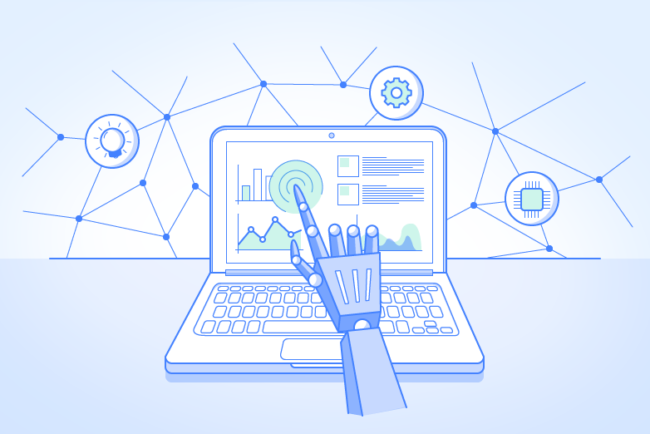As more businesses went (exclusively) digital, the fact that the digital world is becoming increasingly vulnerable to various cyber attacks is now undeniable. While the digitization of businesses opens up endless opportunities and rooms for innovations, it’s no secret that the online world is still so far away from becoming a fully secure place where criminals are properly regulated and digital business entities are well-protected.
Thus, for every business with an online presence, it’s very important for its decision-makers to always ensure all systems are performing according to the current cybersecurity best practices, and everyone involved (that is, all team members), should be properly educated and trained in at least basic cybersecurity protocols.
That is, your company’s cybersecurity is only as strong as the least knowledgeable member of your team. Obviously, this can be challenging to implement for any business, big or small, and this is why in this article we will discuss top challenges in implementing cybersecurity and tips to tackle them. Without further ado, let us begin.
Connected IoT Devices:
In 2025, it is expected that we are going to have a whopping 21.5 billion IoT devices all over the world. While this will open up various opportunities and possible implementations, this will also translate into a much bigger attack surface for cybercriminals.
All of these connected IoT devices are potentially vulnerable to various attack vectors and can be a gateway for hackers to enter your system/network and perform DDoS attacks, malware injections, data breaches, botnet attacks and more. If your system only has five or ten IoT devices, ensuring all of them are secured is probably manageable. But systems with thousands if not tens of thousands of interconnected IoT devices are becoming increasingly common.
Blockchain and Cryptocurrency Attacks:
With the rise of cryptocurrency’s popularity in recent years, many cyberattacks are now targeting blockchain and cryptocurrency. For example, attackers can infect a user’s device with malware so the device performs cryptocurrency mining for the attacker’s profit, bitcoin hack review or various cyberattacks can be launched as an attempt to gain the victim’s cryptocurrency wallet, and so on.
Organizations need to be more aware of the cybersecurity challenges accompanying blockchain technologies, identify gaps and vulnerabilities, and ensure that no vulnerabilities are left open for attackers to exploit.
AI and Machine Learning Attack Vectors:
We can’t deny the benefits of AI and machine learning technologies in various sectors for the past few years. However, not only the AI implementations have their own vulnerabilities that can be exploited by the attackers, hackers and cybercriminals can also use these AI and machine learning technologies to attack your system.
AI, for example, can be used by hackers to identify vulnerabilities in high-value targets among a massive dataset. Handling AI-based attacks, as well as protecting our AI assets from cyber attacks can be a serious challenge now and in the future.
Outdated Hardware and Software:
Technologies are advancing rapidly and new software and hardware are coming every day. The thing is, all of these software and hardware all have their vulnerabilities, and both require to be regularly updated to prevent exploits from cybercriminals.
For software, it’s important to regularly update it with the latest security patches as soon as they are available. However, updating outdated hardware can be more financially (and logistically) challenging.
Mobile Attack Vectors:
Nowadays, more and more people are using at least one mobile device every single day, and so it would only make sense for cybercriminals to target these mobile devices in an attempt to steal sensitive data and other malicious attacks.
Mobile devices are typically more vulnerable due to a number of reasons. First, they are mobile and may frequently connect to unsecured public Wi-Fi. On the other hand, antivirus and anti-malware solutions for mobile devices are, at the moment, still behind their desktop counterparts.
To tackle this issue, educating employees about cybersecurity best practices when using their mobile devices are a must. At the very least, they have to use a reliable VPN before connecting to a public Wi-Fi network.
Sandbox-Evading Malware:
In recent years, sandboxing (the practice of isolating potentially threatening malware from other programs) has become more and more popular. However, cybercriminals have now invented new methods to evade sandboxing.
There are new strains of viruses that can quickly recognize when they are inside a sandbox, and will attempt to counter the sandboxing, for example by not executing the malicious code until they are outside the sandbox (fooling the sandbox that it is a healthy program).
Cybercriminals can use two different methods for evading sandbox techniques:
- User Input Detection: the malware analyzes the level of user input like mouse activity and keyboard activity to check whether they are inside a sandbox.
- Hardware Signature Analysis: analyzing fingerprints that should appear in real hardware, like the number of CPU cores, etc.
Organizations that are currently using sandboxing techniques to protect their systems from malware must configure the sandboxing solution accordingly, for example by hiding the sandbox’s configurations to make it more difficult for the attackers to perform core count.
Cloud Security Issues:
Just like IoT devices, cloud platforms also store large amounts of sensitive and/or regulated data. These cloud solutions may come with various security vulnerabilities, including but not limited to:
- Vulnerable APIs: although the cloud infrastructure itself is secure, the cloud solution might use APIs with public IP addresses. Insecure APIs can be potential vulnerabilities that can be exploited by cybercriminals to gain access to the cloud applications and eventually the entire system.
- Data Security: no matter how secure the company behind the cloud solution is, data loss due to malicious and non-malicious issues is still possible.
- Cloud Misconfigurations: misconfigurations in the cloud infrastructure, as well as the client’s configuration for the cloud app, can be potential vulnerabilities that can be exploited by attackers.
Thus, it’s very important to choose only reputable cloud solutions that put a lot of effort into ensuring the security of their infrastructures and services, and always maintain cybersecurity best practices when using cloud solutions.
Conclusion
While the seven challenges we’ve covered above aren’t the only ones available in today’s very saturated cyberspace, they are among the most important ones to put your attention into in 2021.
Protecting yourself and your business from various cybersecurity threats is growing to become much more complex. Not only you’ll need the right infrastructure to protect your system and network, but as the old saying goes: your organization is only as secure as the least knowledgeable person in your team. Thus, properly educating your team and keeping them up-to-date about the latest cybersecurity best practices is integral if you really want to protect your valuable data and digital assets.













Leave a Reply